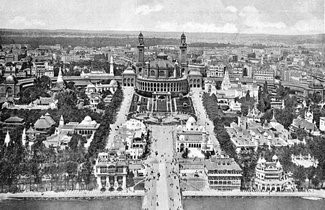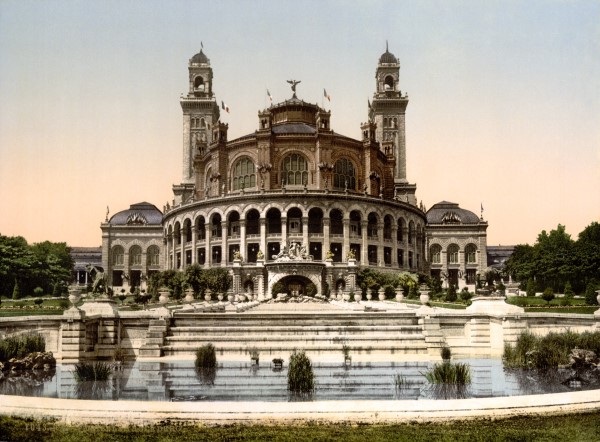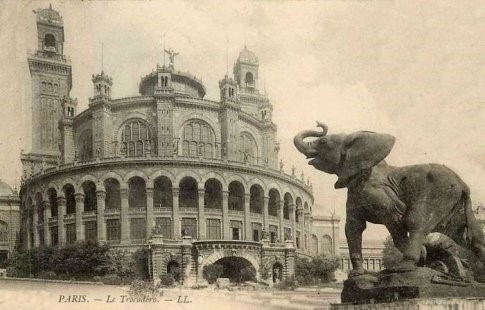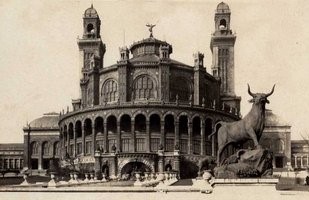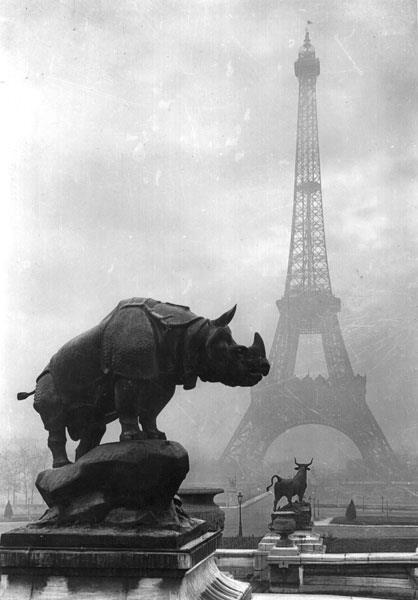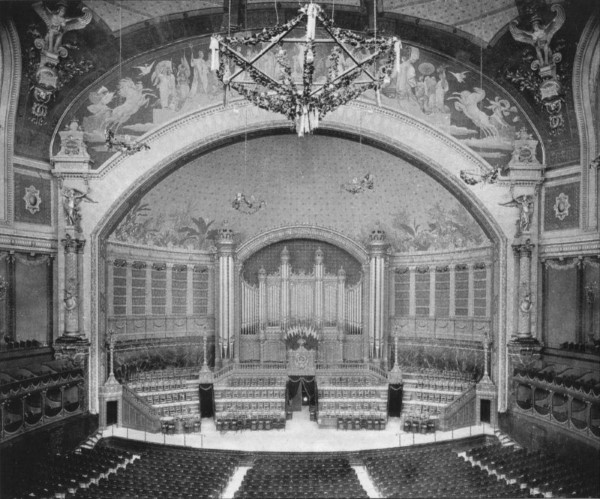- Year 1900.
- 4,500 seats.
Trocadero palace (west to east: Chaillot/Trocadero – Seine – Eiffel Tower – Champ de Mars).
The hill of Chaillot was first arranged for the 1867 World’s Fair. For the 1878 World’s Fair, the (old) Palais du Trocadéro was built here (where meetings of international organizations could be held during the fair). The palace’s form was that of a large concert hall with two wings and two towers; its style was a mixture of exotic and historical references, generally called “Moorish” but with some Byzantine elements. The architect was Gabriel Davioud.
The concert hall contained a large organ built by Aristide Cavaillé-Coll; the first large organ to be installed in a concert hall in France (it has since been modified twice, and eventually moved in 1977 to the Auditorium Maurice Ravel in Lyon, where it is still in use today). The building proved unpopular, but the cost expended in its construction delayed its replacement for nearly fifty years.
The space between the palais and the Seine is set with gardens, designed by Jean-Charles Alphand, and an array of fountains.
Within its garden, the old palace contained two large animal statues, of a rhinoceros and an elephant, which were removed and stored during the demolition of the old Trocadero palace, and have been located next to the entrance of the Musée d’Orsay since 1986. For the Exposition Internationale of 1937, the old Palais du Trocadéro was demolished and replaced by the Palais de Chaillot which now tops the hill.
